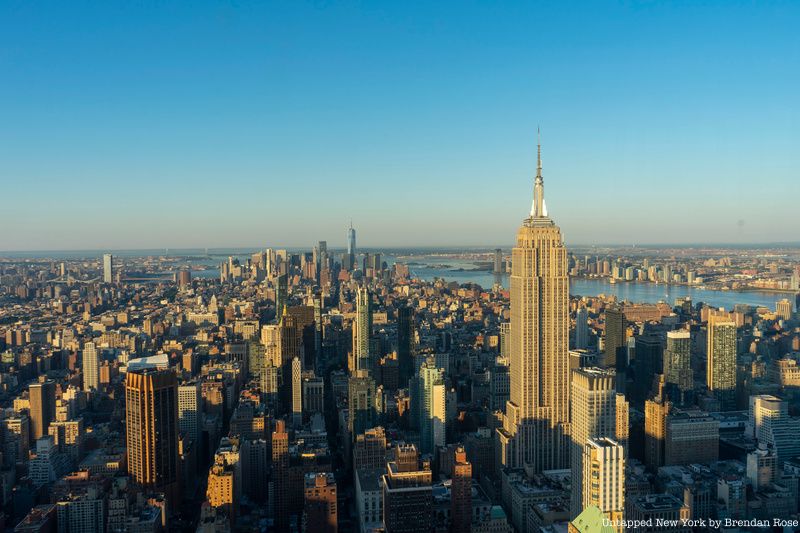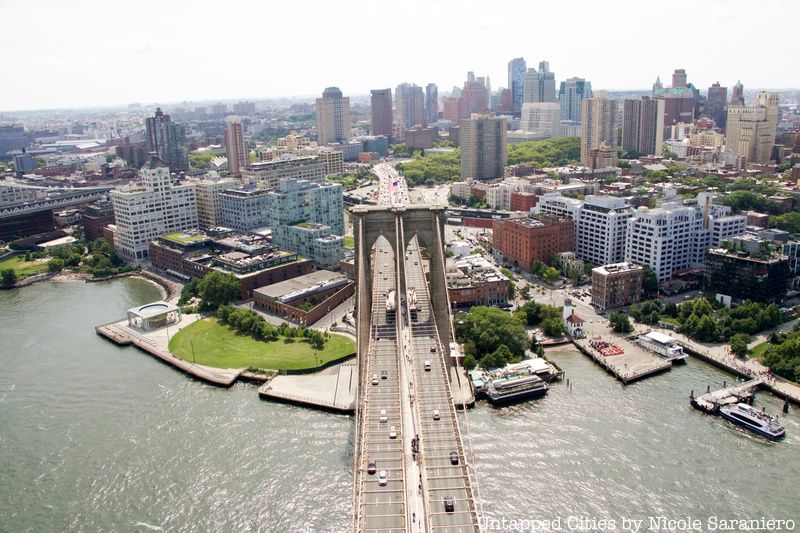NYC’s Forgotten ‘War on Christmas Trees’
Discover how an obscure holiday crackdown affects festive street vendors today!



In New York City, there are streets named after musicians, astronauts, and even board games. The names of the city bear traces of the people who were here before us, from the Lenape Native Americans to the Dutch and English colonists. The names of New York boroughs represent the city’s storied history and the diverse groups of people who have inhabited these places. In his new book, Names of New York, which was featured in The New Yorker and The New York Times, author Joshua Jelly-Schapiro explores how the history and culture of New York City, as well as some misinterpretations and legends, have influenced the names of its neighborhoods, roads, and natural features. Using Jelly-Schapiro’s book as a launching point, Untapped New York traced the stories of how the five New York boroughs got their names!

In the first chapter of his book, Jelly-Schapiro relates the story of Henry Hudson‘s 1609 voyage up the river that would later come to bear his name. One of the seamen aboard the ship wrote in his journal that a group of Native Americans they met pointed to the land we now call Manhattan and said “Manahata.” These Native Americans would have been speaking Munsee, a language that is now considered endangered. The European explorers of the time, distracted by the natural riches of the island, didn’t take note of what “Manahata” actually meant, or at least they didn’t record its meaning.
In 1822, scholar John Gottlieb Ernestus Heckewelder posited that “Mannahatta,” which the explorers claimed to have heard, was actually “Manahachtanienk,” which meant “island where we all became intoxicated.” A successor of Heckewelder’s, William Wallace Tooker, reinterpreted the meaning as “island of the hills” in 1901. The most credible theory we have today comes from Canadian scholar Albert Anthony, who is fluent in Munsee. Anthony proposes that “Man-a-ha-tonh” meant “place where we gather timber for bows and arrows.” Another theory is that the sailors heard the word “Menating” which translates simply to “island.”

Breukelen was just one of a scattering of small Dutch villages along the western shore of what the colonists called Langue Eylandt (Long Island). Jelly-Schapiro writes that “Breukelen was founded as a ferry landing for farmers in 1646.” The name Breukelen is borrowed from a Dutch town outside of Amsterdam and it means “broken land.”
When the British took over, they named the collection of towns around Breukelen Kings County after King Charles II and anglicized the name of Breukelen to Brooklyn. Many Brooklyn neighborhoods bear the names of notable Dutch figures, including the Bensons (Bensonhurst) and the Nostrands (Nostrand Avenue). Jelly-Schapiro also points out in his book the descriptive Dutch names like Buschwick and Flatbush which come from “Boswijk” or “town in the woods” and “Vlacke Bos” or “wooded plain,” respectively. The small village of Brooklyn grew rapidly and by 1834 was its own city. A few decades later, in 1890, census data revealed that Brooklyn was the fourth-largest city in the United States. It finally joined became one of the five New York boroughs in 1898.

The name of Queens County was assigned by the English when they also labeled Kings County in 1683. While Kings County was named for King Charles II, Queens County was allegedly named for his wife, Queen Catherine of Braganza. A sculpture of Queen Catherine was planned in the 1990s, but protests citing that the Queen benefitted from the slave trade caused the project to be canceled.
In Names of New York, Jelly-Schapiro explores the history of many Queens neighborhood names. Throughout this New York borough, you will find Munsee names, like Rockaway (from “leekuwahkuy,” meaning “sandy place”); Hassock (“marshy”); and Neponsit (“place between the waters”).

Staten Island is another New York name that was originally Dutch and then anglicized by the English. The English did this to many of the street names from the original Dutch street grid of New Amsterdam. In the case of Staten Island, it was originally referred to by the Dutch as Staaten Eylandt, which Jelly-Schapiro writes means “States’ Island.” This piece of land was named for the governing body of Holland, the States-General.
When the English took over, they dubbed the island Richmond County, for the illegitimate son of Charles II, Charles Lennox Duke of Richmond. Richmond County became the Borough of Richmond in 1898 and the name Staten Island, which harkens back to New York City’s Dutch roots, was not officially recognized as the New York borough name until 1975.

The northernmost of all New York boroughs takes its name from a Swedish sea captain turned farmer, Jonas Bronck. Bronck purchased land and built a farmstead at what is now 132nd Street and Lincoln Avenue in 1639, according to the Bronx County Historical Society. The English turned Bronck into Bronx.
Another Dutch name attached to the Bronx is Van Cortlandt. The park, which is one of the largest parks in New York City. takes its name from a wealthy Dutch family who owned the land since the early 1600s.
Next, check out How 10 Famous NYC Buildings Got Their Names
Subscribe to our newsletter